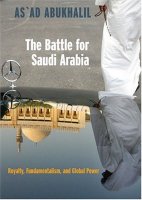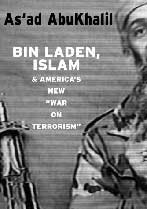I have been in the US for more than 30 years, and the propaganda filled coverage of Iran in the US press has not changed one bit. It is always the same: the clerical regime is on the verge of collapse and the economy is "in shambles". This article in the Economist is of a very different quality (despite the cover of the new issue). It contains facts and figures that you will never ever read in the silly US press: "The most visible shift is in public infrastructure. Tehran, the capital, is a tangle of new tunnels, bridges, overpasses, elevated roads and pedestrian walkways. Shiny towers rise in large numbers, despite the sanctions. Screens at bus stops display schedules in real time. Jack Straw, a former British foreign minister and a regular visitor, says that “Tehran looks and feels these days more like Madrid and Athens than Mumbai or Cairo.”
Smaller Iranian cities have changed even more. Tabriz, Shiraz and Isfahan are working on underground railways. Half the traditional bathhouses in Qazvin, an industrial town west of Tehran, have closed in recent years. In a basement with a domed ceiling built 350 years ago, the forlorn manager sweeps around two kittens and bemoans the loss of a 700-year-old competitor, musing that “people now have bathrooms with hot running water.” In Yalayesh, a remote village near the Caspian sea, entertainment remains old-fashioned: a Kurdish strongman, Ismail the Hero, shows off a lion in a cage on the back of his blue truck. Still, two years ago the government finished piping natural gas into every house, making winters with temperatures of -20ºC “tolerable for the first time”, says a spectator.
During the eight-year presidency of Mahmoud Ahmadinejad, which ended in 2013, prosperity spread rapidly. Loans, handouts and social-housing programmes, however corrupt and ineptly run, showered billions of oil dollars on the poor. Many found white-collar jobs in government agencies. The middle class ballooned. Villagers streamed into Tehran to buy property as GDP per person rose from $4,400 in 1993 to $13,200 last year (at purchasing-power parity). Despite the sanctions, Iran does not look like beleaguered Cuba; people drive new sedans made locally, not 1950s Chevrolets. Life became harder when sanctions were tightened in 2011, but even now Iranians live much better than most of their neighbours.
Prosperity has inspired an obsession with technology that restrictions on internet access cannot dampen. Facebook is the primary medium for half the country’s youth and Twitter is used by officials to put out statements—never mind that both are banned. Freedom House, an American human-rights lobby, ranks Iran last in the world in terms of internet freedom, but in reality access is cheap and fast. (The fastest speeds are achieved near seminaries, since clerics preach online and get priority on fibre-optic cables.)"
Smaller Iranian cities have changed even more. Tabriz, Shiraz and Isfahan are working on underground railways. Half the traditional bathhouses in Qazvin, an industrial town west of Tehran, have closed in recent years. In a basement with a domed ceiling built 350 years ago, the forlorn manager sweeps around two kittens and bemoans the loss of a 700-year-old competitor, musing that “people now have bathrooms with hot running water.” In Yalayesh, a remote village near the Caspian sea, entertainment remains old-fashioned: a Kurdish strongman, Ismail the Hero, shows off a lion in a cage on the back of his blue truck. Still, two years ago the government finished piping natural gas into every house, making winters with temperatures of -20ºC “tolerable for the first time”, says a spectator.
During the eight-year presidency of Mahmoud Ahmadinejad, which ended in 2013, prosperity spread rapidly. Loans, handouts and social-housing programmes, however corrupt and ineptly run, showered billions of oil dollars on the poor. Many found white-collar jobs in government agencies. The middle class ballooned. Villagers streamed into Tehran to buy property as GDP per person rose from $4,400 in 1993 to $13,200 last year (at purchasing-power parity). Despite the sanctions, Iran does not look like beleaguered Cuba; people drive new sedans made locally, not 1950s Chevrolets. Life became harder when sanctions were tightened in 2011, but even now Iranians live much better than most of their neighbours.
Prosperity has inspired an obsession with technology that restrictions on internet access cannot dampen. Facebook is the primary medium for half the country’s youth and Twitter is used by officials to put out statements—never mind that both are banned. Freedom House, an American human-rights lobby, ranks Iran last in the world in terms of internet freedom, but in reality access is cheap and fast. (The fastest speeds are achieved near seminaries, since clerics preach online and get priority on fibre-optic cables.)"








